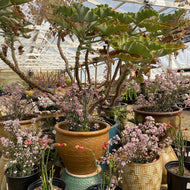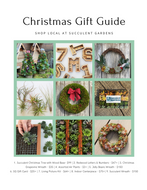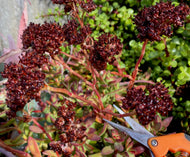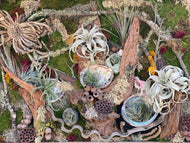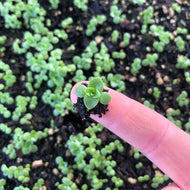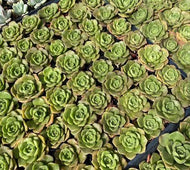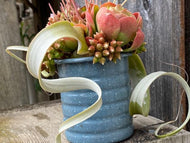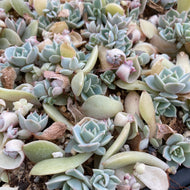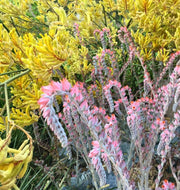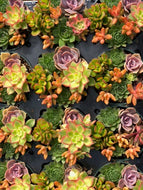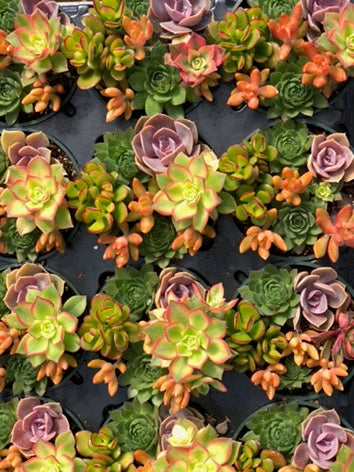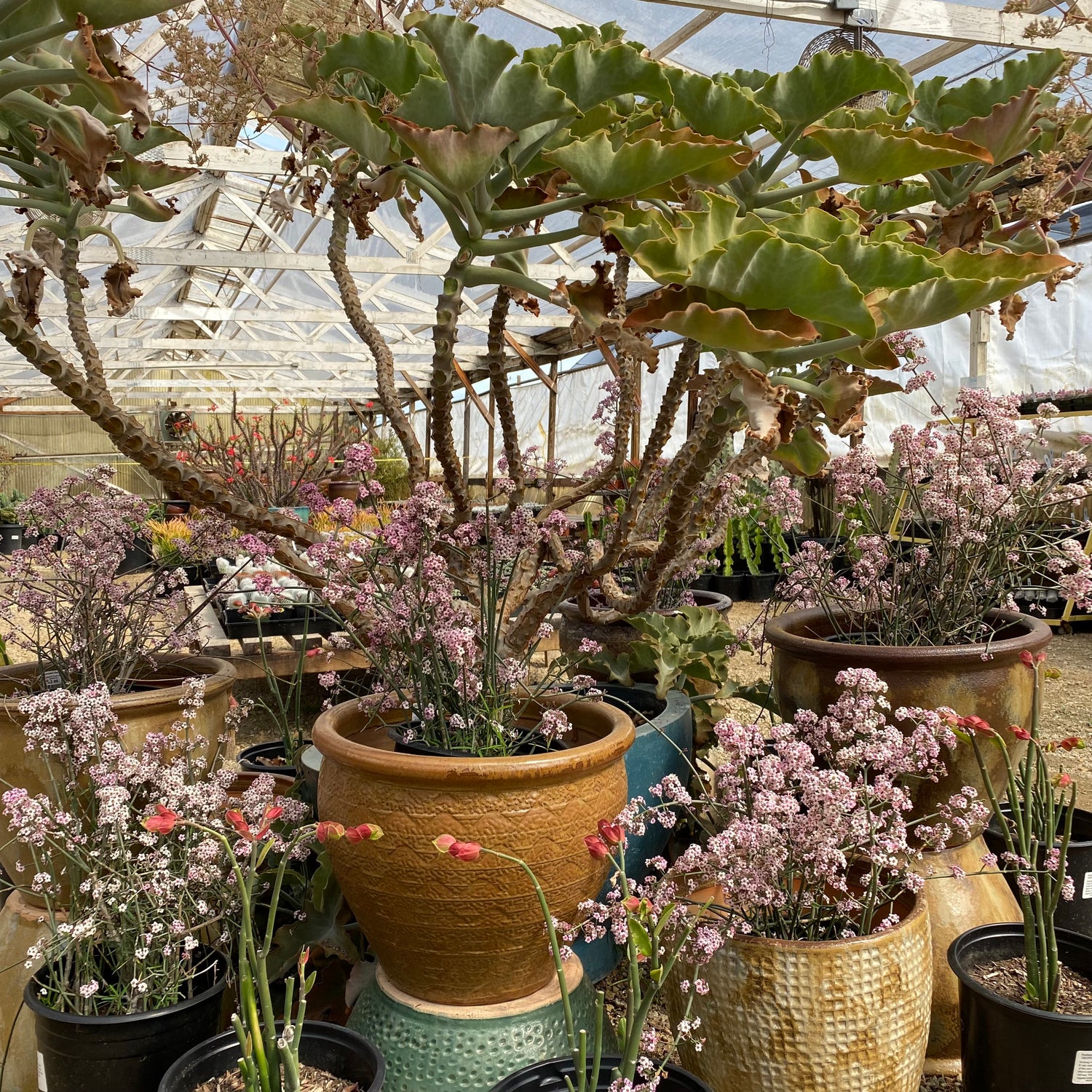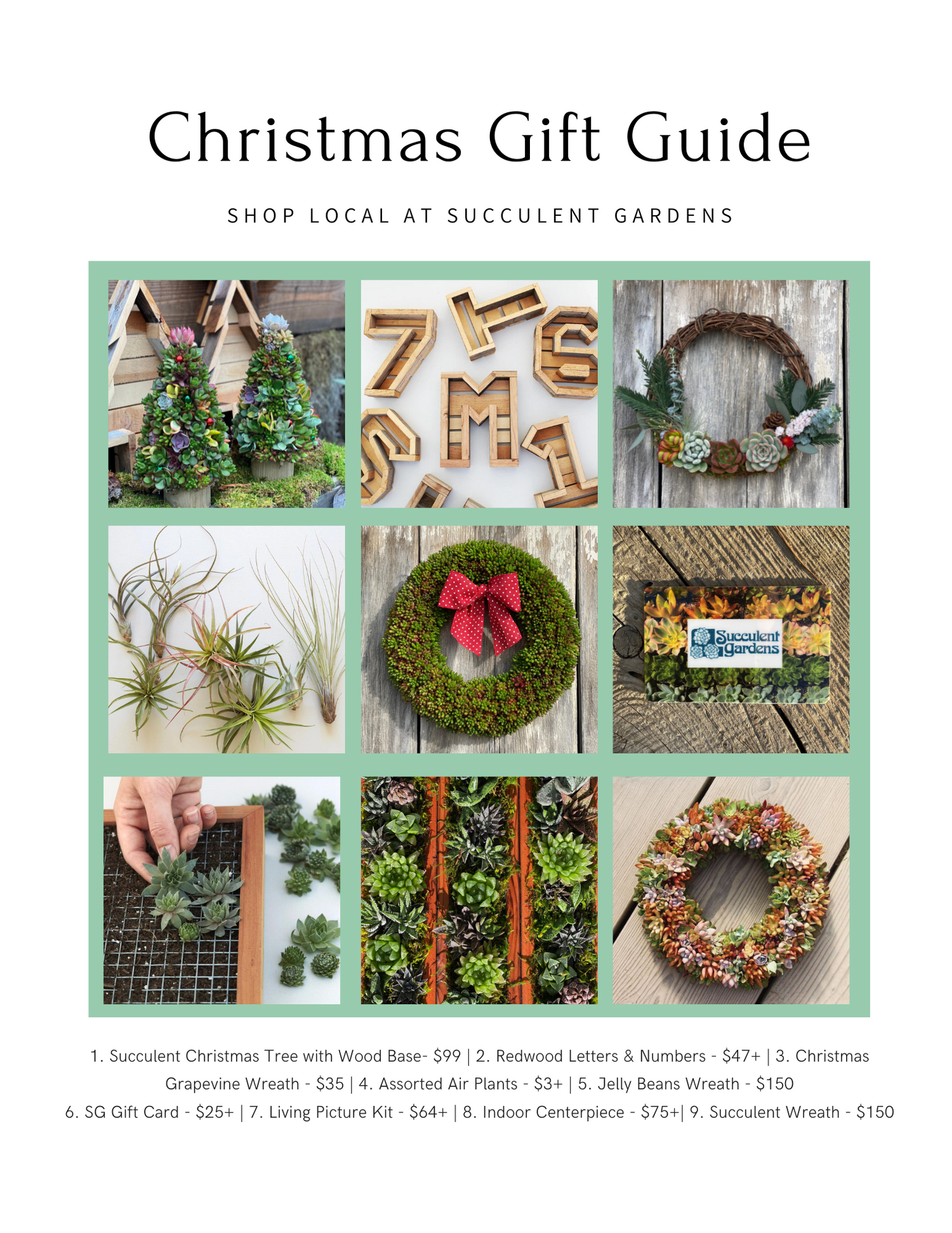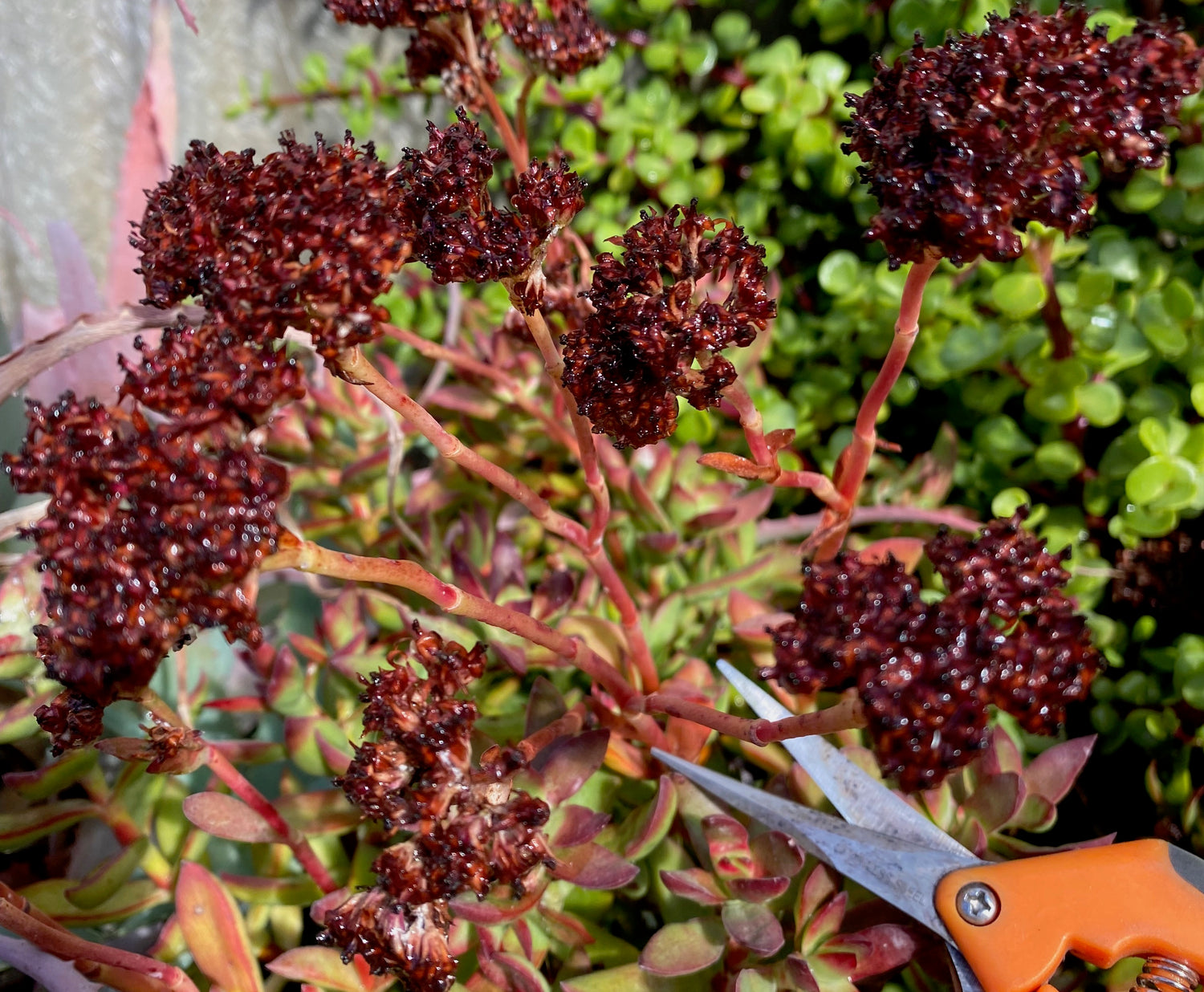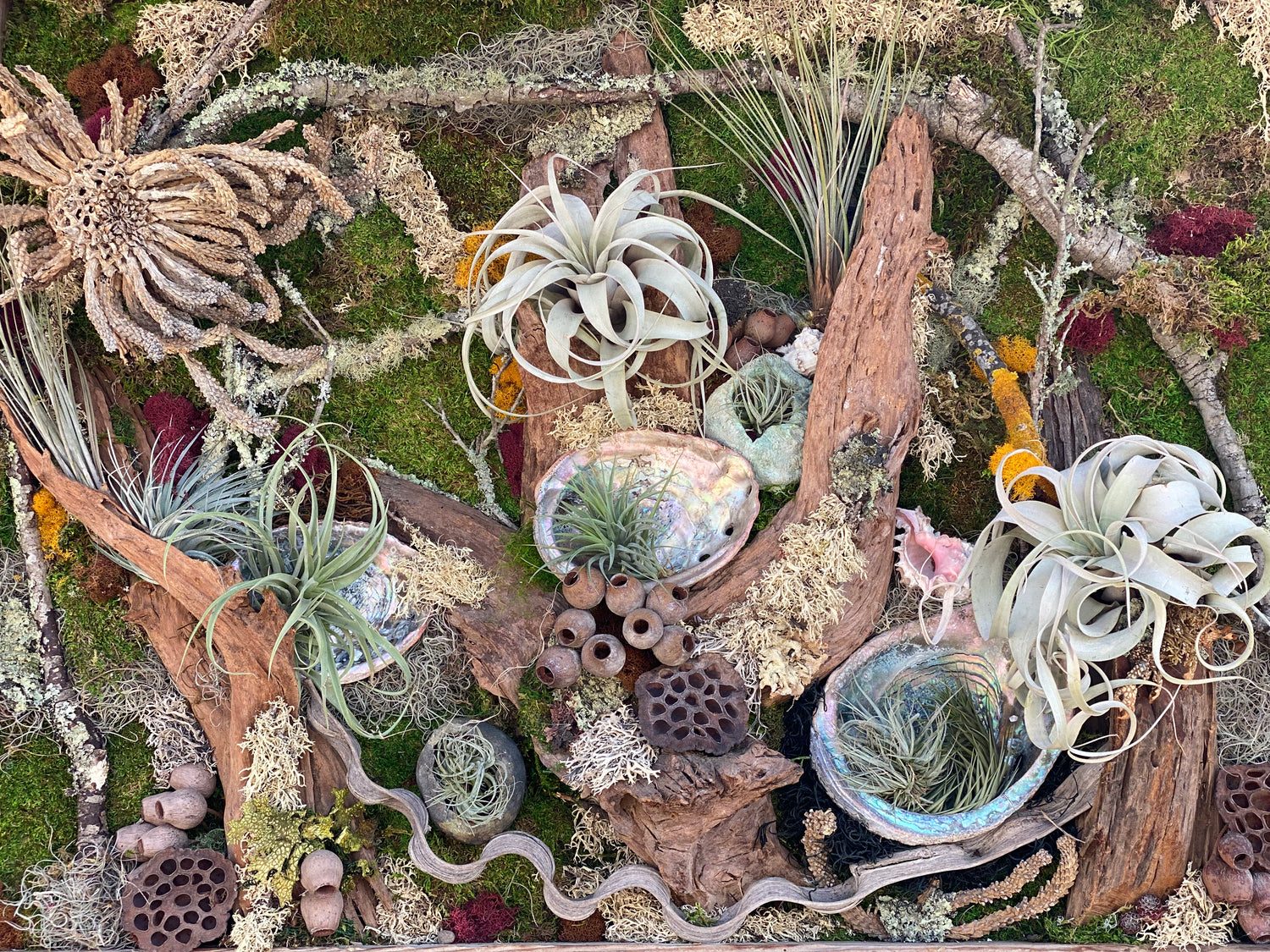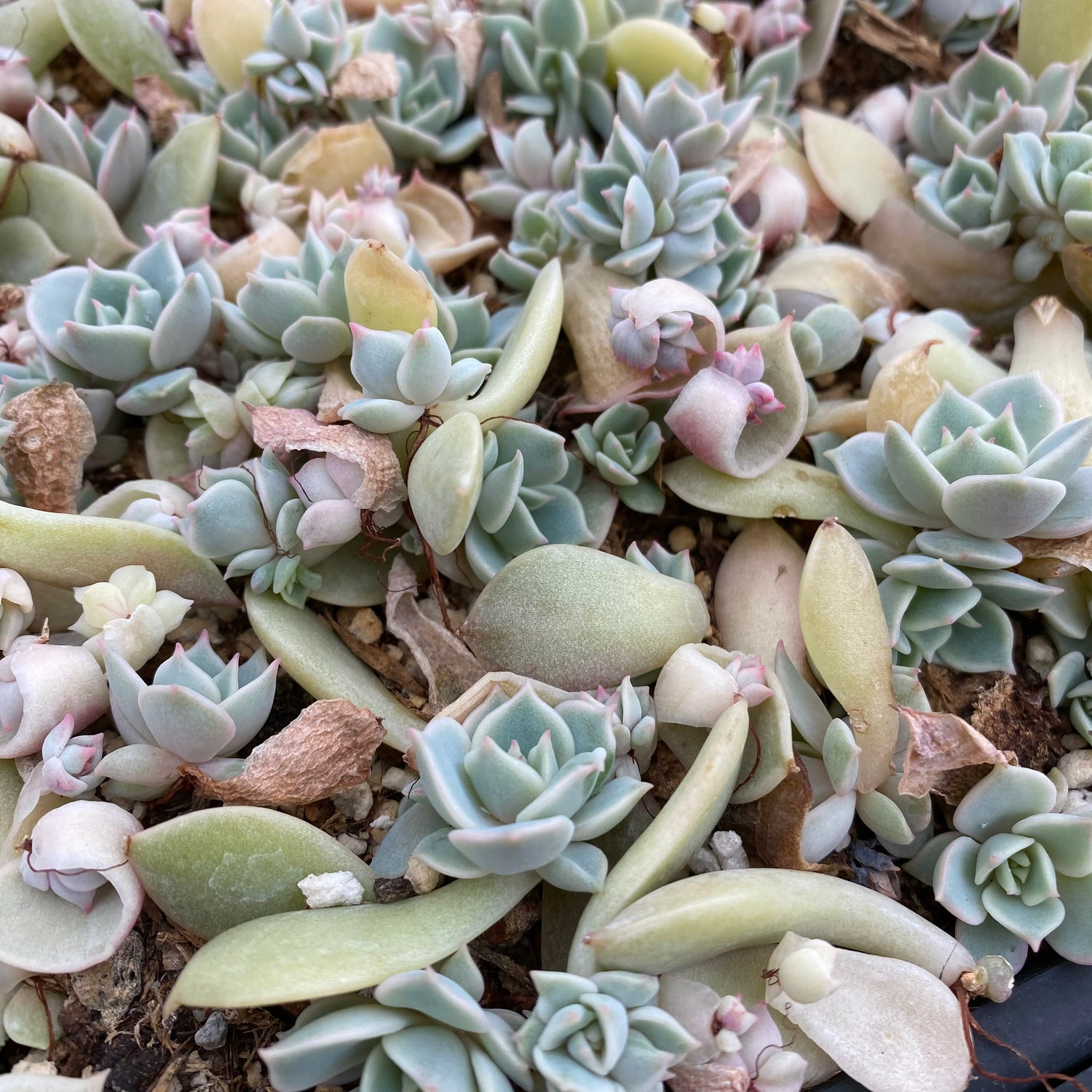Succulent Therapy: How to Get the Full Benefits of Gardening
Succulents have become increasingly sought-after because they are accessible for the beginning plant enthusiast. They are low-maintenance, colorful, and easy to use in projects. Did you know you can further deepen your experience with plants by creating an intentional mindset to de-stress and focus while gardening? Learn how to achieve the full benefits of gardening by connecting with loved ones, getting outside (even if you don't have a garden space of your own), practicing acceptance, and staying present.

Connect with Loved Ones
Having niche interests helps us to connect with others on a deeper level. We can gain stronger relationships with others by having similar specialized interests. It also encourages us to be more inclined to educate ourselves further, because we have someone we know we can share it with.
How to Counteract Social Isolation-Share cuttings with friends. Succulents are easy to propagate and cuttings can survive long periods of time bare-root, making it an approachable hobby to share with beginners. Plants become keepsakes when gifted by someone else. Each time they care for the plant, they are reminded of your kindness.

-Send a gift to a succulent lover in your life. COVID-19 has made it difficult to visit to travel and spend time with friends and family. Send a thoughtful gift to show that you're thinking about them.
-Join an online succulent community. Social media has given us the ability to connect with plant people all over the world. Share pictures of your garden, partake in succulent ID conversation, and learn tips from new garden friends.
-Garden with your children. Succulents are not just for adults, kids are mesmerized by different colors and textures when they come into the nursery and are excited to take home a living plant to care for. It is always inspiring to see their enthusiasm and eagerness to be with nature.
Get Outside
Working from home has changed our daily lifestyles. Some of us no longer need to leave the house every day to commute to work. Checking in on our plants gives a rewarding reason to get out of the house and get some fresh air.


-Visit a local nursery. Make a day of it! Create a list of gardening supplies you need or succulents that are on your wishlist and support a local business.

-Walk around your neighborhood. A walk around the block at golden hour can be a magical experience (and free!). Keep an eye out to see which plants are visited by pollinators and quiz your plant identification knowledge. Note how the landscapes change throughout the seasons and acknowledge succulents that thrive in your area.

-Visit an arboretum or botanical garden. Botanical gardens have landscapes that have been established for many years, which allows seeing succulents at full maturity. Botanical gardens are also commonly grouped by geographical area to show natural plant relationships. This expands our awareness of how plants grow beyond the 4" pot. Bring a camera and take pictures of landscapes that inspire you.


Practice Acceptance
We’ve all experienced negative outcomes in the garden--a snail ate new seedlings overnight, a hard frost killed our favorite plant, a gopher ate the core of an Agave-- we’ve seen it all at Succulent Gardens. Experiencing downfalls enables us to grow and deeply appreciate when things do go right. Acceptance helps us to understand what is out of our control and make peace with the outcomes whether they are good or bad. Remember, gardening is always an experiment and an opportunity to learn. We bring our best efforts to the things we can control and let go of the rest.

Be Present
Gardening can be a sacred activity where we bring our minds to focus without distractions. Being present helps us to listen to our plants and give them the attention they need while receiving the benefits of mindfulness.

An easy way to start is by observing your surroundings. For example:
-Try to observe how many hours your patio gets direct sunlight throughout the day.
-Can you observe any new blooms that are forming on your succulents?
-Listen for garden sounds. Can you hear grass moving? Bees buzzing or birds singing?
At Home Tip: Creating a division in living spaces in your home helps to differentiate work and downtime. This can be a small apartment balcony with container gardens or a corner in your living room filled with indoor plants. Leave the phone out of sight to get a tech break.

-Clean dusty leaves and spider webs with a hose or damp rag.
-Remove spent leaves and blooms.
-Create a succulent wishlist for future plant collecting.
-Think about your dream garden. What elements are important to you?
-Fertilize your succulents.
-Make a floral arrangement with succulent flowers and herbs from the garden.
-Meditate with a succulent mandala.

Conclusion
Gardening with succulents has the potential to be a meaningful activity to create positive change in our daily lives. With small steps toward slowing down, caring for plants can be a therapeutic experience for ourselves and to share with others. I hope that you can incorporate some of these changes to make your succulent gardening a more gratifying experience.




